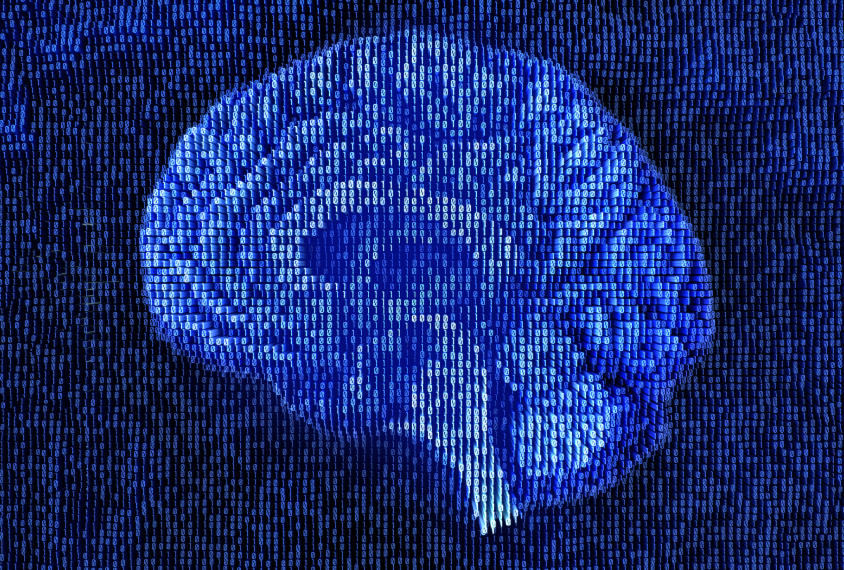
Large study shines spotlight on ‘mosaic’ mutations in autism
About 8 percent of non-inherited mutations in people with autism occur in only some of the body’s cells, according to a study of 20,000 people.
About 8 percent of de novo, or non-inherited, mutations in people with autism appear in only some of the body’s cells, according to an analysis of sequences from nearly 20,000 people1. Previous studies missed the vast majority of these so-called ‘mosaic mutations.’
The findings, published Monday in Nature Neuroscience, add to mounting evidence that mosaic mutations contribute to autism risk. These mutations arise after conception; the later they occur, the fewer cells they affect.
The new study relied on DNA from blood and saliva. Identifying the pattern of the mutations in the brains of people with autism might provide new insights into the condition’s neural underpinnings, says lead investigator Christopher Walsh, chief of genetics at Boston Children’s Hospital. “It might help us learn what parts of the brain are really critical to autism,” he says.
Some of the genes that are mutated in people with autism are highly expressed in the amygdala, a brain region involved in emotion and social functioning.
Mosaic mutations may also help explain why some people with autism have milder features than others. “One of the ways that you could have diversity among individuals would be to have a greater or lesser degree of cells affected through mosaicism,” says John Greally, professor of genetics at Albert Einstein College of Medicine in New York, who was not involved in the study.
DNA detectives:
In a pair of studies published in 2014, researchers scoured the sequences from nearly 4,000 families to identify de novo mutations in people with autism. The data came from two genetic repositories: the Simons Simplex Collection (SSC) and the Autism Sequencing Consortium (ASC). (The SSC is funded by the Simons Foundation, Spectrum’s parent organization.)
Those studies homed in on de novo mutations that affect all of a person’s cells — a pattern that suggests the mutations originated in a parent’s egg or sperm. They excluded most mosaic mutations, which are difficult to distinguish from sequencing errors.
In the new study, Walsh and his colleagues reanalyzed the same sequences, and sequenced the protein-coding regions of 282 families added to the ASC in the years since. They used an algorithm to identify mutations and did not discard those present in only a subset of cells.
After excluding mutations present in a database of sequences from 6,500 controls, the researchers identified 4,846 mutations that are present in people with autism but not in their parents or siblings. Of these, they found 468 mutations that affect 80 percent or less of the body’s cells, representing 7.5 percent of the mutations. The 2014 studies completely missed 390, or 83 percent, of these mutations.
As a check, the researchers reanalyzed some of the samples with sensitive sequencing techniques. They validated about 90 percent of the mutations as truly mosaic.
“It’s absolutely clear that these mutations play an important role in autism,” says Maja Bucan, professor of genetics at the University of Pennsylvania, who was not involved in the study.
The findings underscore the fact that conventional genetic sequencing methods do not catch all types of autism mutations. “A lot of the previous studies have actually missed this category of somatic risk for autism,” says study investigator Elaine Lim, a postdoctoral fellow in Walsh’s lab.
Space and time:
The researchers also looked at how the mutations affect genes expressed in the brain. They relied on two data repositories: BrainSpan, a map of genes expressed in the brain throughout development, and the 1000 Genomes Project, a catalog of mutations found in the general population.
They found that the mutations in people with autism tend to land in regions that are both expressed in the brain and rarely mutated in the general population. They are also more likely than mutations in unaffected siblings to occur in genes expressed in the fetal brain.
Mosaic mutations in people with autism are particularly prone to perturb genes that are highly expressed in the amygdala. This brain region is known to show alterations in structure and function in people with autism.
“That’s, to me, the most interesting aspect of this study,” says Brian O’Roak, assistant professor of molecular and medical genetics at Oregon Health and Science University in Portland, who was not involved in the work. “They try to zone in on a particular part of the brain where these genes are more likely to be expressed.”
The researchers identified 27 genes that have mosaic mutations in at least two people with autism. The list includes SCN2A, one of the top autism risk genes. Another gene with recurrent mosaic mutations, SMARCA4, regulates the expression of GRIN2B — also a leading autism risk gene.
The findings jibe with an unpublished analysis of mosaic mutations in the SSC dataset. O’Roak’s team presented that study at the 2016 American Society of Human Genetics Annual Meeting and posted it to the preprint server bioRxiv. Using a different strategy, the team found that mosaic mutations contribute to autism risk in 4 to 8 percent of the families. They also detected mosaic mutations in SCN2A.
Walsh and his colleagues analyzed the relationship between autism mutations and intelligence quotient in the participants for whom scores were available. Their findings so far hint that mosaic mutations have milder effects than those affecting the entire body.
References:
- Lim E.T. et al. Nat. Neurosci. Epub ahead of print (2017) PubMed
Recommended reading

Developmental delay patterns differ with diagnosis; and more

Split gene therapy delivers promise in mice modeling Dravet syndrome

Changes in autism scores across childhood differ between girls and boys
Explore more from The Transmitter

Smell studies often use unnaturally high odor concentrations, analysis reveals

‘Natural Neuroscience: Toward a Systems Neuroscience of Natural Behaviors,’ an excerpt
